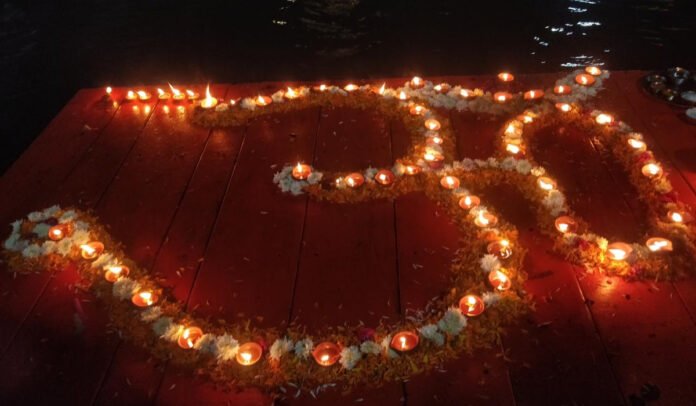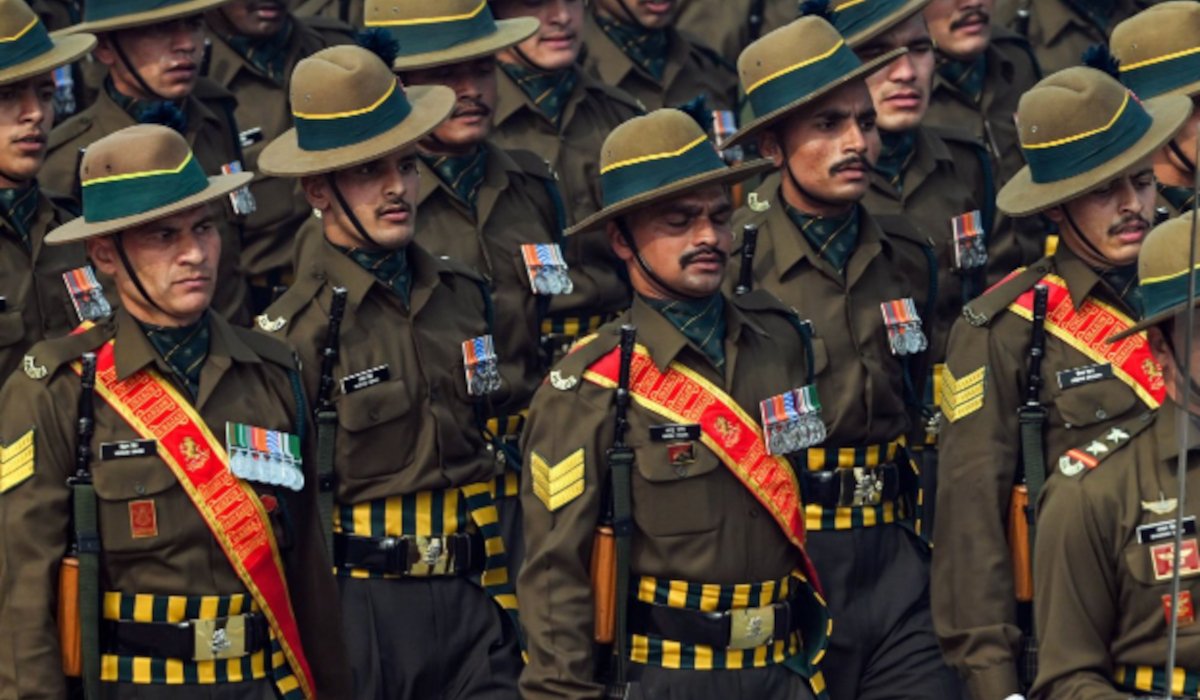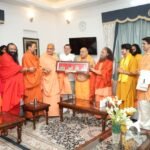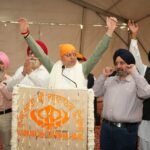In a luminous union of devotion and tradition, Kartik Purnima in Uttarakhand transforms the Himalayan foothills and river valleys into sanctuaries of faith and light. The full moon night, known as the night of divine illumination, marks the end of the holy month of Kartik in the Hindu lunar calendar. Across the state, from the ghats of Haridwar to the quiet banks of the Mandakini and Alaknanda, countless lamps flicker upon sacred waters, mirroring the brilliance of the moon above.
 Kartik Purnima is more than a festival. It is a reaffirmation of life’s cyclical harmony. It celebrates the victory of good over evil, light over darkness, and knowledge over ignorance. In Uttarakhand, where the sacred and the natural converge, this day becomes an expression of the land’s spiritual heartbeat.
Kartik Purnima is more than a festival. It is a reaffirmation of life’s cyclical harmony. It celebrates the victory of good over evil, light over darkness, and knowledge over ignorance. In Uttarakhand, where the sacred and the natural converge, this day becomes an expression of the land’s spiritual heartbeat.
The Spiritual Significance
According to Hindu tradition, Kartik Purnima commemorates several divine events. It marks the day when Lord Vishnu took the Matsya Avatara, his first incarnation as a fish, to rescue humanity and sacred texts from a great deluge. It is also the day Lord Shiva defeated the demon Tripurasura, freeing the world from tyranny. Hence, it is also known as Tripurari Purnima, symbolising the destruction of darkness.
Bathing in holy rivers during Kartik Purnima is considered to purify the soul. Lighting lamps and setting them afloat represents an offering to the divine, a gesture of gratitude for life and creation. Many believe that on this night the gods themselves descend to the rivers, making every drop sacred. In Uttarakhand, revered as Devbhoomi, the Land of the Gods, such beliefs gain deeper resonance.
Haridwar: The River of Light

Nowhere is Kartik Purnima felt more profoundly than in Haridwar, one of Hinduism’s most sacred cities. At Har Ki Pauri, devotees gather before dawn to take a holy dip in the Ganga. The icy water and early morning chill are overcome by devotion as chants of Har Har Gange echo across the ghats.
As evening falls, Haridwar glows. Thousands of earthen lamps illuminate the steps and the river’s edge. Priests perform the Ganga Aarti, their rhythmic movements creating an almost hypnotic sight. The flames rise and fall in unison with the hymns, while the Ganga reflects the shimmering fire like liquid gold.
For countless pilgrims, offering a lamp to the Ganga is a family tradition, an act repeated year after year in remembrance of ancestors. As each diya drifts away, it carries within it a prayer for peace, for renewal, and for the eternal flow of life.
Rishikesh and the Mountain Shrines
A few kilometres upstream, Rishikesh celebrates Kartik Purnima with a quieter reverence. The sound of temple bells blends with the rustle of peepal leaves as ashrams conduct special meditations and aartis. Lamps float beneath the suspension bridges, their faint glow matching the serenity of the mountains.
Further north, at Badrinath, Kedarnath, and Rudraprayag, devotees offer prayers even as winter begins to blanket the peaks. Villagers light diyas near frozen springs, believing them to be fragments of the Ganga herself. In Kumaon, families gather near local streams or lakes to light lamps and share simple offerings of rice and sweets.
In Bageshwar, Kartik Purnima coincides with a traditional fair that blends spirituality with community life. Traders, herders, and villagers arrive from distant valleys, bringing wool, spices, and handmade goods. Folk musicians sing ballads of gods and heroes, turning the full moon night into a festival of faith and folklore.
Rituals of Faith and Fire
The essence of Kartik Purnima lies in its simplicity. Before sunrise, devotees bathe in rivers or springs, believing that the act washes away past sins. Women prepare earthen lamps filled with ghee and place them on leaf boats adorned with marigolds. As dusk deepens, these tiny vessels of light float downstream, a moving prayer in motion.
The night is also the conclusion of Chaturmas, the four month period of penance during which the gods are said to rest. With Kartik Purnima, the divine awakening begins. Temples reopen for grand aartis, signalling the renewal of energy in the universe.
In homes, the festival carries domestic warmth. Courtyards are decorated with rangolis, families cook kheer and pua, and children watch as elders light lamps in rows along verandas. The soft golden glow spilling from homes mirrors the lamps upon the rivers, the same faith shining in two worlds.
The Cultural Fabric of the Hills
 In Uttarakhand’s hill villages, Kartik Purnima is not only a religious occasion but also a community celebration. After the harvest season, villagers relax and give thanks. In Garhwal, people sing jagar songs dedicated to local deities. In Kumaon, temple courtyards come alive with bhajans that last through the night.
In Uttarakhand’s hill villages, Kartik Purnima is not only a religious occasion but also a community celebration. After the harvest season, villagers relax and give thanks. In Garhwal, people sing jagar songs dedicated to local deities. In Kumaon, temple courtyards come alive with bhajans that last through the night.
The festival also inspires storytelling. Elders recount tales of Lord Shiva’s cosmic dance after slaying Tripurasura, or of the river goddess Ganga blessing mortals with purity. Such oral traditions keep the festival’s spirit alive, linking one generation to the next.
For mountain communities, where winters are harsh and resources scarce, Kartik Purnima is a reminder of resilience. The lamp’s flame becomes a metaphor for endurance, delicate yet persistent, shining against the cold.
Light, Ecology and Responsibility
As faith meets modern awareness, Kartik Purnima also carries an environmental message. Uttarakhand’s rivers, the Ganga, Yamuna, Alaknanda and Mandakini, sustain millions downstream. Devotees and environmentalists increasingly emphasise eco friendly observances, using biodegradable lamps and natural offerings.
A Haridwar priest once remarked, “Lighting a diya for the Ganga is not just worship, it is a vow to keep her clean.” Such sentiments capture the growing consciousness that spirituality and sustainability must coexist. Pilgrims are encouraged to treat the riverbanks as sacred spaces that deserve care, not clutter.
Temples and ashrams across Uttarakhand now combine ritual with responsibility. Volunteers clean ghats after ceremonies, while school groups organise awareness drives. The festival’s message of light thus extends beyond devotion. It becomes an act of preservation.
The Celestial Connection
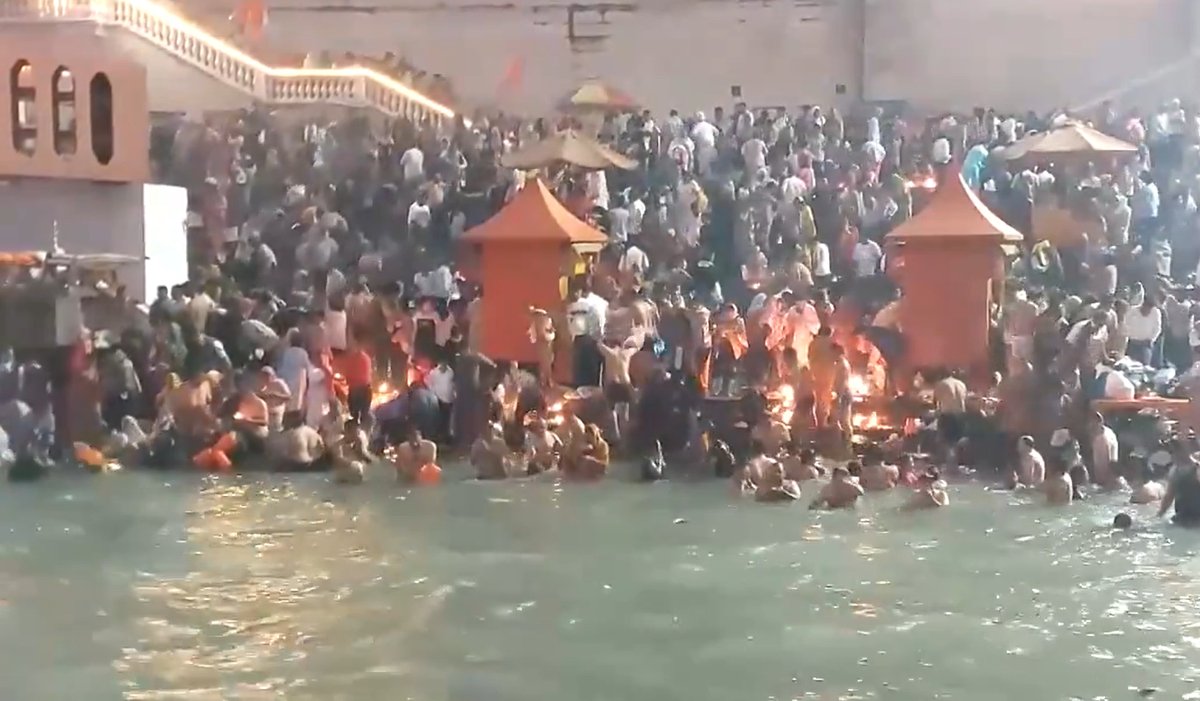
The timing of Kartik Purnima, under the radiant full moon, is significant. In the Hindu calendar, the month of Kartik is considered most auspicious for meditation and charity. The full moon represents emotional balance and clarity.
Ancient scriptures describe this night as a juncture when the cosmic energies align perfectly, allowing spiritual seekers to experience heightened awareness. In Uttarakhand’s quiet valleys, where moonlight silvers the snow peaks, one can almost feel this cosmic stillness.
For ascetics and monks meditating along the Ganga, the night symbolises union with the divine. The river’s murmur becomes a mantra, and the moonlit current a symbol of eternal flow, reminding humanity of its own transient yet sacred place in the cycle of existence.
Myths and Legends
Local folklore gives Kartik Purnima a distinct Himalayan flavour. In Garhwal, people tell of a hermit who lit a single lamp near a frozen spring. The warmth melted the ice, giving birth to a stream that nourished the valley. In Kumaon, legends speak of celestial beings who descend to earth to bless devotees bathing in mountain rivers.
These stories may differ in form, but their essence is constant. Light brings life. The lamp, humble and fleeting, becomes a symbol of divine continuity, a small act of faith echoing through eternity.
Dev Diwali: When the Gods Rejoice
For many devotees, Kartik Purnima is also Dev Diwali, the Diwali of the Gods. It is believed that on this night, the heavens themselves celebrate the triumph of light. The gods descend to bathe in the Ganga, and temples on earth mirror the celestial festivities.
In Haridwar and Rishikesh, temples are adorned with marigolds and flickering lamps. Priests perform elaborate rituals, invoking divine presence through chants that reverberate across the water. The entire landscape feels transformed, heaven and earth seem to share the same glow.
Whether understood as myth or metaphor, the belief carries a profound truth. When humans act with devotion, they bring divine light into the world.
The Human Voice of Faith
Devotion on Kartik Purnima transcends doctrine. It is reflected in the everyday voices of those who live by the river. “Every diya I light is a thank you to the Ganga,” says a lamp seller from Haridwar, arranging hundreds of tiny earthen pots on his stall. “She gives us life. This is the least we can give back.”
A sadhu sitting by the banks of the Ganges in Rishikesh expresses it differently. “The lamp we light is not for gods alone. It is a lamp for humanity, to guide us toward humility, peace, and understanding.”
Such sentiments show that Kartik Purnima is not confined to temples or rituals. It lives in the hearts of ordinary people who see spirituality as service and gratitude.
A Night Beyond Time
As the full moon climbs higher, Uttarakhand becomes a landscape of light. Rivers glisten, peaks glow faintly, and every village flickers with the warmth of faith. The chants fade into the distance, replaced by the quiet rush of flowing water.
In that silence lies the essence of Kartik Purnima, an understanding that light is not merely a physical phenomenon but a spiritual state. It is the light of awareness, compassion, and balance.
The festival endures because it speaks to what is timeless, humanity’s desire for purity, renewal, and connection with the cosmos. Each lamp that floats on the river carries a whisper from the mountains, a reminder that faith, like the flame, may waver but never dies.


